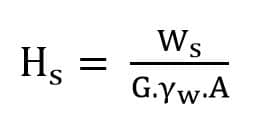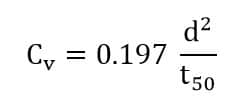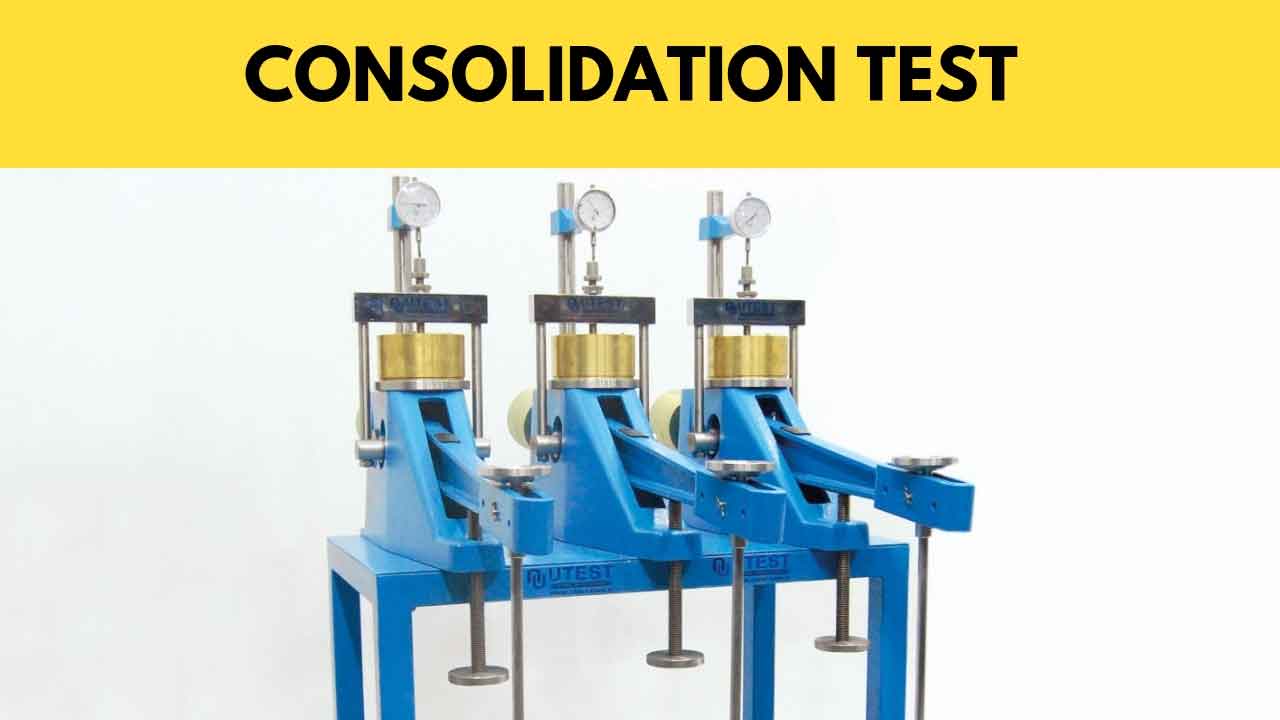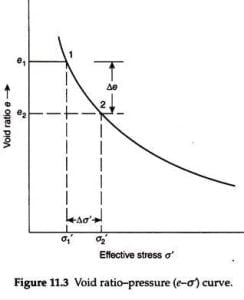Table of Contents
Consolidation of soil can be defined as the mechanical process under which change in the volume of soil occurs in response to variations in pressure.
The determination of consolidation of soil is necessary as it directly affects the settlement and pore pressure properties of the soil.
Precisely, a consolidation test can be defined as a test conducted to assess the rate and magnitude of settlement in soils.

The consolidation test is an important test for geotechnical investigations as well as foundation designs.
1. General Test Procedure of Consolidation Test on Soil
The general test procedure for conducting the consolidation test on soil has been briefly explained below.
a. Objective
a. To determine the Coefficient of compressibility (av).
b. To determine the Coefficient of volume change (mv).
c. To determine the Compression Index (Cc).
d. To determine the Coefficient of consolidation ( Cv).
b. Apparatus Required
1. Consolidometer (Alternatively Oedometer) with consolidation ring, two filter papers, two porous stones, and loading pad.
2. A weighing balance with an accuracy of 0.01 grams.
3. A dial gauge with an accuracy of 0.002 grams.
4. Knife, spatula, or fine wires of metal.
5. Stopwatch
6. An oven
7. Vernier Calipers
8. Water Reservoir
c. Procedure
The procedure for conducting the consolidation test on soil consists of the following series of steps:
1. The soil sample is first collected utilizing the consolidation metal ring.
It must be noted that the ring is well-cleaned and dried.
The height and diameter of the ring must also be measured using vernier calipers and weighed using the weighing balance.
2. Then, the metal ring is pushed into the sample of soil by using the hands and is taken out along with the soil sample.
The soil specimen must be projected about 10 mm on both sides of the metal ring.
3. The excess soil on the top and bottom of the rings is then trimmed using a knife, spatula, or the fine wires of metal.
Excess soil can be used for determining the water content of the soil.
4. Then, the metal ring along with the soil sample is weighed.
It must be taken care that the outer part of the ring does not contain any soil particles.
5. Two porous stones are taken and saturated either by boiling for about 15 minutes or by submerging them in distilled water for about 4 to 8 hours.
6. The Consolidometer is then arranged from bottom to top in the order of porous stone, filter paper, specimen ring, filter paper, and top porous stone.
7. The loading pad is placed on the uppermost porous stone and the consoildometer is fixed using the metal screw.
8. The entire setup is then mounted on the loading frame such that the load applied is axial.
9. The dial gauge is then mounted on the top. It must be noted that sufficient space for swelling of the soil sample is present.
10. The water reservoir is then connected to the arrangement and the same water level is maintained in the reservoir and the specimen.
11. Then, the load is applied. Generally, for the soft soil, an initial load of 2.5 KN/m² is applied whereas an initial load of 5 KN/m² is applied for ordinary soil.
12. The loading is left until there is no change in the dial gauge reading and the final gauge reading is noted.
13. Then, the load increment of about 10 KN/m² is applied and the stopwatch is started to note the dial gauge readings for every interval of time.
Usually, the readings are noted for about 24 hours. In general, readings are taken at 0.25, 1, 2.5, 4, 6.25, 9, 16, 25, 30 minutes, 1, 2, 4, 8, 24 hrs
14. Similarly, the load increments are applied from 20, 50, 100, and 200 up to 800 KN/m² and the process is repeated.
15. After the value of the last load, the increment has been recorded, the load is reduced to about one-fourth of the last load value and left for 24 hours.
The dial gauge is then noted.
16. The load is again reduced and the process is repeated until the load value reaches 10 KN/m² and every reduction in the dial gauge readings is duly noted.
17. The experimental assembly is then removed from the loading frame and carefully dismantled.
18. The sample ring is then taken and excess water is wiped out and weighed.
19. The sample ring is then dried in an oven and is again weighed to note its dry weight.
d. Observations
The observations of the consolidation test include the following:
Height of ring =
Diameter of ring =
Area of ring =
The volume of the ring =
Weight of ring =
Specific Gravity of Solids, G =
Weight of ring + soil specimen =
Initial water content =
The initial height of the specimen, H =
Final Water Content =
The final weight of the soil specimen =
Table 1: Dial gauge readings for different loads at different times
| The intensity of load (kN/m2) Horizontal | 10 | 20 | 50 | 100 | 200 | 400 | 800 |
| Time Interval (vertical) | |||||||
| 0 minutes | |||||||
| 0.25 minutes | |||||||
| 1.0 minutes | |||||||
| 2.5 minutes | |||||||
| 4 minutes | |||||||
| 6.25 minutes | |||||||
| 9 minutes | |||||||
| 16 minutes | |||||||
| 25 minutes | |||||||
| 30 minutes | |||||||
| 1 hour | |||||||
| 2 hours | |||||||
| 4 hours | |||||||
| 8 hours | |||||||
| 24 hours |
e. Calculations
The calculations are done using the following formulas:
Height of Solids
Height of Voids (Hv) = H – Hs
Void Ratio (e) = Hv/ Hs
Table 2: Void ratio calculation for Different Pressure Intensities
| Intensity Pressure ( kN/m2) | Initial Dial Reading | Final Dial Reading | Specimen height, H | Height of solids, Hs | Height of voids, Hv | Void Ratio, e |
| 10 | ||||||
| 20 | ||||||
| 50 | ||||||
| 100 | ||||||
| 200 | ||||||
| 400 | ||||||
| 800 |
f. Graph
1. Dial gauge reading Vs. logarithmic of time – to determine the coefficient of consolidation (Cv).
2. Dial gauge reading Vs. square root of time – to determine the coefficient of consolidation (Cv).
Fig: Void Ratio Vs Effective Stress Graphs
3. Final void ratio Vs. Effective stress – to determine the coefficient of compressibility (av) and the coefficient of volume change (mv).
![]()
![]()
4. Final void ratio Vs logarithmic of effective stress – To determine Compression Index (Cc).

7. Result
Coefficient of compressibility (av) =
Coefficient of volume change (mv) =
Compression Index (Cc) =
Coefficient of consolidation (Cv) =
This was for the Consolidation Test on Soil.
2. References1. Content Filter & Authenticity Checking Team, Dream Civil International (Our team checks every content & detail to maintain quality.) |
Read More: Slump Test


